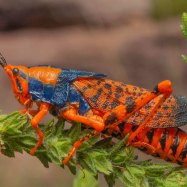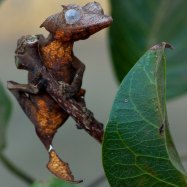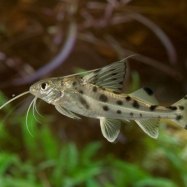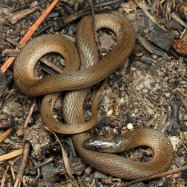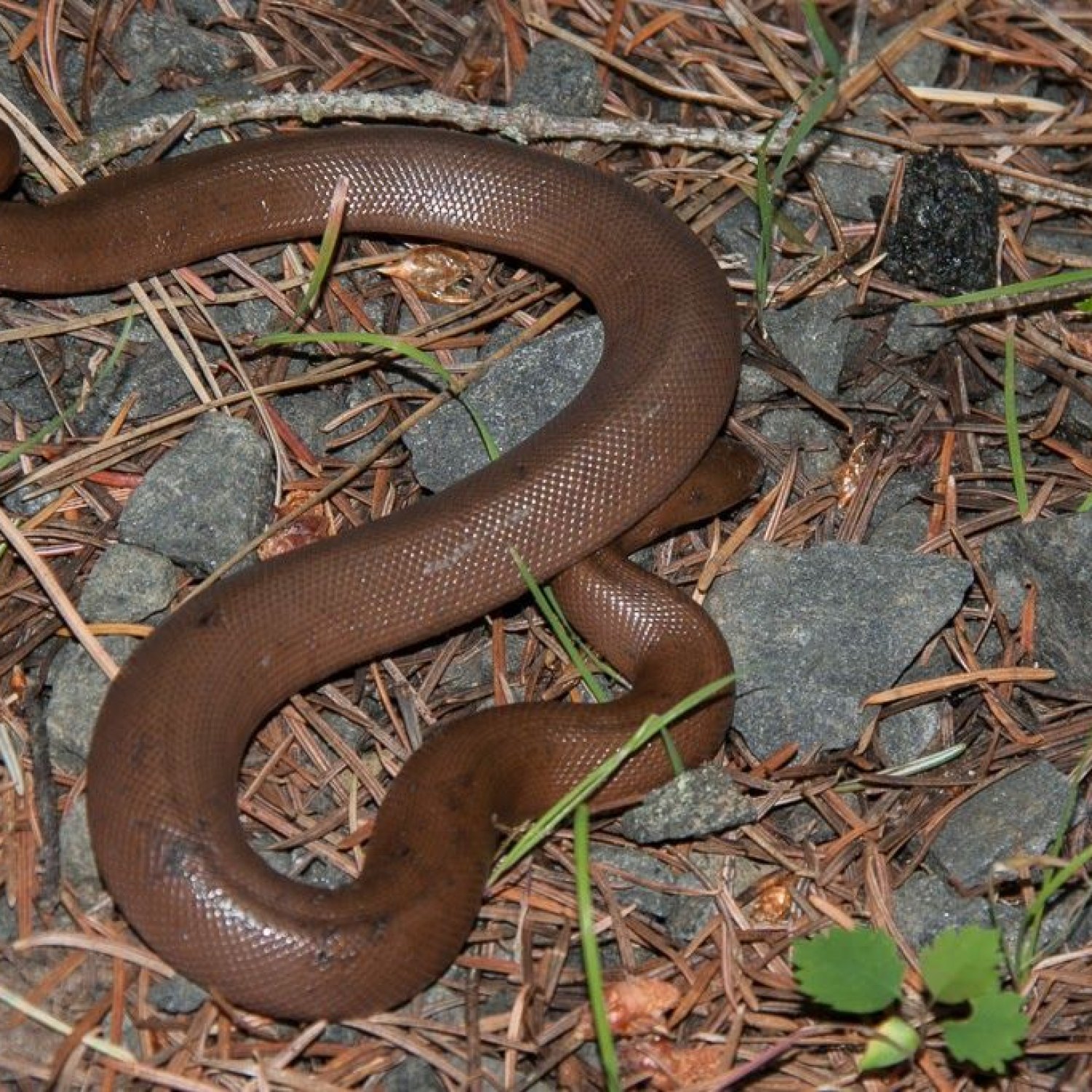
Western Blind Snake
6-10 inches
The Western Blind Snake, found in North America, may look like a worm but is actually a snake with a length of 6-10 inches. Its unique body shape, elongated and cylindrical, allows it to burrow and thrive in the ground. Despite its small size, it plays a crucial role in maintaining the balance of the ecosystem. #WildlifeWednesday
Animal Details Summary:
Common Name: Western Blind Snake
Kingdom: Animalia
Habitat: Deserts, grasslands, forests
The Mysterious Western Blind Snake: A Hidden Gem of the Desert
The southwestern United States is known for its vast deserts, rugged landscapes, and diverse range of wildlife. Among these creatures lies a relatively unknown reptile, the Western Blind Snake (Leptotyphlops humilis). This elusive animal, also known as the Leptotyphlopidae, may not be as well-known as its more popular relatives, such as rattlesnakes and lizards, but its unique features and habits make it a fascinating creature to discover.At first glance, the Western Blind Snake may not seem like anything special Western Blind Snake. Its appearance is simple, with a brown coloration and an elongated, cylindrical body measuring only 6-10 inches in length. However, as we delve deeper into its biology and behavior, we will see that the Western Blind Snake is far from ordinary.
The Basics: Classification and Distribution
Let's begin with a breakdown of the Western Blind Snake's scientific classification. It belongs to the Animalia kingdom, the Chordata phylum, and the Reptilia class. Within the Reptilia class, it falls under the Squamata order, meaning it is a scaled reptile. Finally, its family, Leptotyphlopidae, is a group of small, extremely slender, and highly specialized snakes.The Western Blind Snake's preferred habitats include deserts, grasslands, and forests, which can be found in both its native countries of the United States and Mexico. It is commonly found in the southwestern United States, including states such as Arizona, New Mexico, and Texas, as well as in various regions of Mexico. Its distribution also extends into Central America, where it can be found in Guatemala and El Salvador Wood Frog.
A Unique Feeding Method
One of the most remarkable features of the Western Blind Snake is its feeding method. As an insectivore, it mainly feeds on ants and termites, which can make up a significant portion of its diet. However, unlike most other snakes, it does not use its sense of smell or sight to locate its prey. Instead, it uses a technique called "worming," in which it swallows its head-first into the ground and searches for underground insects using its highly sensitive snout and tongue.This worming behavior allows the Western Blind Snake to navigate through the soil, feeding on unsuspecting insects without being detected. Additionally, it has specialized teeth that allow it to break through the tough exoskeletons of ants and termites, making it an efficient hunter.
The Mystery of Its Eyesight
Despite its name, the Western Blind Snake is not entirely blind. While it lacks traditional eyes, it has two small, dark spots on its head, giving it a very limited sense of sight. Its main sense of perception is through sensitivity to vibrations and movement, which allows the snake to navigate its surroundings and locate prey.Why do these snakes have reduced vision? The answer may lie in their preferred underground habitats. Unlike other snakes that bask in open areas, the Western Blind Snake spends most of its time underground, making the development of sight unnecessary to its survival.
An Evolved Body Shape
Another standout feature of the Western Blind Snake is its body shape. Its elongated and cylindrical body allows it to move effortlessly through the soil and squeeze into tight spaces. This unique body shape is due to its specialized vertebrae, which are longer and thinner than those of other snakes, giving it the flexibility to slither through tiny gaps and navigate its underground homes with ease.The Importance of Its Coloration
The Western Blind Snake's brown coloration may seem unremarkable, but it serves an essential purpose. This coloration allows it to blend into its surroundings, making it difficult for predators to spot. As a result, these elusive creatures can remain hidden and safe from potential danger.Interactions with Humans
As a relatively hidden species, the Western Blind Snake does not often come into contact with humans. However, despite their small size, they do play a vital role in the ecosystem. By helping control insect populations, they contribute to the overall balance of their habitats.Unfortunately, like many other reptiles, the Western Blind Snake faces threats such as habitat loss, road mortality, and persecution by humans who mistake it for a venomous snake. It is essential to protect these creatures and their habitats to ensure their survival for future generations.
Discovering the Western Blind Snake
If you are interested in seeing a Western Blind Snake in its natural habitat, you may have to look closely. Due to their elusive nature, it may be challenging to spot one in the wild. However, some zoos and wildlife centers have these snakes on display, giving people the opportunity to observe them up close and learn more about their unique features and behaviors.In conclusion, the Western Blind Snake may not be the most well-known or visually striking creature, but its specialized features and behaviors make it a true hidden gem of the desert. From its unique feeding method to its evolved body shape and reduced vision, this elusive reptile has adapted to thrive in its preferred habitats. As we continue to explore and learn more about these intriguing animals, it is essential to promote their conservation and ensure their survival for years to come.

Western Blind Snake
Animal Details Western Blind Snake - Scientific Name: Leptotyphlops humilis
- Category: Animals W
- Scientific Name: Leptotyphlops humilis
- Common Name: Western Blind Snake
- Kingdom: Animalia
- Phylum: Chordata
- Class: Reptilia
- Order: Squamata
- Family: Leptotyphlopidae
- Habitat: Deserts, grasslands, forests
- Feeding Method: Insectivorous
- Geographical Distribution: Southwestern United States, Mexico
- Country of Origin: United States, Mexico
- Location: North America
- Animal Coloration: Brown
- Body Shape: Elongated and cylindrical
- Length: 6-10 inches
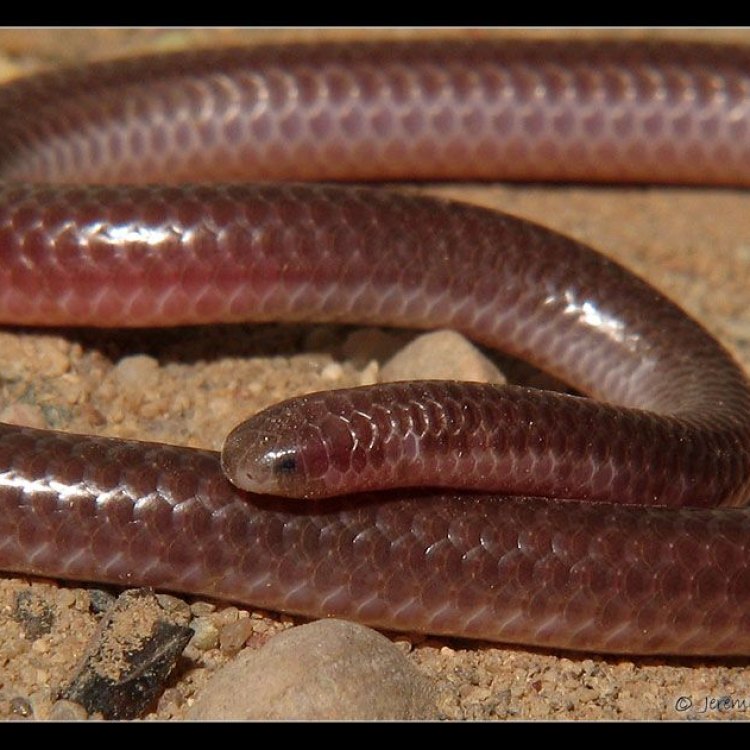
Western Blind Snake
- Adult Size: Average adult length is around 8 inches
- Average Lifespan: Unknown
- Reproduction: Egg-laying
- Reproductive Behavior: Unknown
- Sound or Call: No vocalizations
- Migration Pattern: Non-migratory
- Social Groups: Solitary
- Behavior: Burrows in soil and leaf litter
- Threats: Habitat destruction
- Conservation Status: Least Concern
- Impact on Ecosystem: Unknown
- Human Use: None
- Distinctive Features: Blind and legless
- Interesting Facts: They are completely blind and navigate using their keen sense of smell and touch.
- Predator: Birds, larger snakes, and mammals
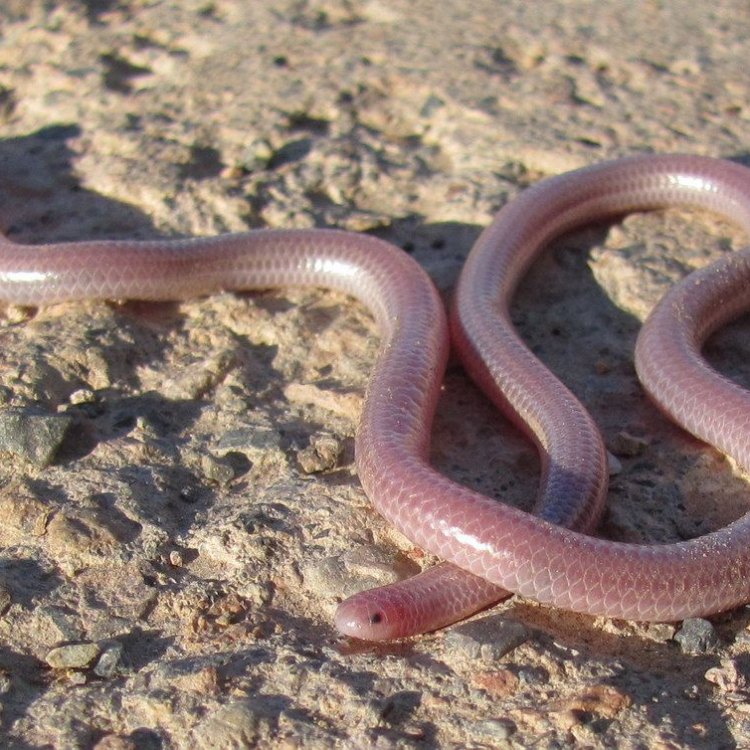
Leptotyphlops humilis
The Unique and Fascinating World of Western Blind Snakes: A Closer Look at the Legless Marvel
Imagine a snake that is completely blind and has no legs, yet still thrives in its environment. That is the world of the Western Blind Snake, a lesser-known but intriguing species that is found throughout the western United States and parts of Mexico. While it may not have the striking appearance or reputation of other snakes, the Western Blind Snake has several unique features that make it a truly fascinating creature.In this article, we will take a closer look at the Western Blind Snake, exploring its physical characteristics, behavior, and impact on the ecosystem PeaceOfAnimals.Com. Join us on this journey to discover the hidden wonders of this legless marvel.
The Basics: Adult Size and Lifespan
The Western Blind Snake, also known as the Western Threadsnake, is a relatively small species of snake with an average adult length of around 8 inches. This makes it one of the smallest snakes in the world, with some individuals only reaching a maximum length of 10 inches.Despite its small size, the Western Blind Snake can live up to 5 years in captivity. However, in the wild, the average lifespan is still unknown. This is due to the elusive and solitary nature of these snakes, making it difficult for researchers to track their lifespan accurately.
Reproduction: Egg-Laying and Unknown Reproductive Behavior
Similar to many other snake species, the Western Blind Snake reproduces through egg-laying. In spring or early summer, female snakes will lay a clutch of 2-4 eggs in hidden locations such as under rocks or logs. The eggs are relatively large compared to the size of the mother, measuring around 1 Weasel.5 inches in length.However, the reproductive behavior of the Western Blind Snake is still relatively unknown. It is believed that they may engage in courtship rituals, but there is limited information on this topic. As these snakes spend most of their lives underground, studying their reproductive behavior in the wild is quite challenging.
A Silent Existence: Sound or Call and Migration Patterns
One unique aspect of the Western Blind Snake is that it does not have the ability to vocalize, making it a silent species. This means that it does not have any specific sound or call that it uses to communicate with other snakes or warn potential predators.Additionally, the Western Blind Snake is a non-migratory species. This means that it does not undertake any long-distance movements but rather stays within a relatively small range for most of its life. This behavior is likely due to their reliance on underground burrows for shelter and food, making it unnecessary for them to migrate.
Solitary by Nature: Social Groups and Behavior
Unlike some other snake species that may form social groups or exhibit social behavior, the Western Blind Snake is a solitary creature. This is because they prefer to spend most of their lives buried deep underground, where they can find shelter, moisture, and food. These snakes are primarily active at night, and during the day, they retreat to their underground burrows to avoid predators and extreme temperatures.Their behavior is also quite secretive and elusive, making them difficult to observe in the wild. However, it is known that they use their keen sense of smell and touch to navigate their environment and locate their prey.
A Threatened Existence: Habitat Destruction and Conservation Status
One of the main threats to the Western Blind Snake is habitat destruction. As these snakes rely heavily on the soil and leaf litter for shelter and prey, the destruction of their habitat can have severe consequences on their survival. Development, urbanization, and agriculture are all contributing factors to the loss and degradation of their natural habitat.However, despite these threats, the Western Blind Snake is currently listed as a species of Least Concern on the International Union for Conservation of Nature (IUCN) Red List. This means that it is not considered to be facing any major threats or in danger of extinction at this time.
Mysterious Impact: Unknown Effects on the Ecosystem
Due to their small size and elusive nature, the Western Blind Snake's impact on the ecosystem is still largely unknown. It is believed that, like other snake species, they may play a role in controlling rodent populations. However, the extent of their impact and the potential consequences of their absence from the ecosystem are still uncertain.More research and observation are needed to fully understand the ecological role of the Western Blind Snake and its impact on the environment.
No Use for Humans: Western Blind Snakes and Human Interaction
As a species that primarily lives underground and is completely blind, the Western Blind Snake has no direct use for humans. It is not commonly kept as a pet due to its secretive nature and unique care requirements, and its small size makes it unsuitable for consumption.However, as with all wildlife, it is important to respect and preserve the habitat of the Western Blind Snake to ensure their survival in the natural world.
Distinctive Features: Blind and Legless
The most distinctive feature of the Western Blind Snake is, of course, its blindness and lack of legs. These adaptations make it a highly specialized species, perfectly suited for its underground lifestyle.Their blindness is due to the absence of functional eyes, and their legless body allows them to burrow effortlessly through the soil and leaf litter. This unique design also helps them to conserve energy as they move underground.
Interesting Facts: Blind Navigation and Predators
While the Western Blind Snake may not have the typical physical traits usually associated with snakes, it has unique abilities that set it apart from other species. One of the most interesting facts about these snakes is that they are completely blind, yet they navigate their environment with ease. They rely on their highly sensitive sense of smell and touch to find their way and locate their prey.Moreover, the Western Blind Snake is not without its own predators. Due to their small size, they are preyed upon by birds, larger snakes, and mammals. They may also fall victim to small mammals such as shrews and voles, who are not deterred by their blindness.
The Enigmatic and Intriguing World of the Western Blind Snake
In conclusion, the Western Blind Snake may not be the most well-known or visually striking snake species, but it has several unique features that make it a fascinating creature. From its blindness and lack of legs to its solitary and elusive nature, this legless marvel has adapted perfectly to its underground world.While there is still much to learn and understand about the Western Blind Snake, one thing is for sure - these snakes are a true wonder of nature, and their presence in our ecosystem plays an important role in maintaining balance and diversity. It is our responsibility to preserve their habitat and ensure their survival for future generations to appreciate the enigmatic and intriguing world of the Western Blind Snake.
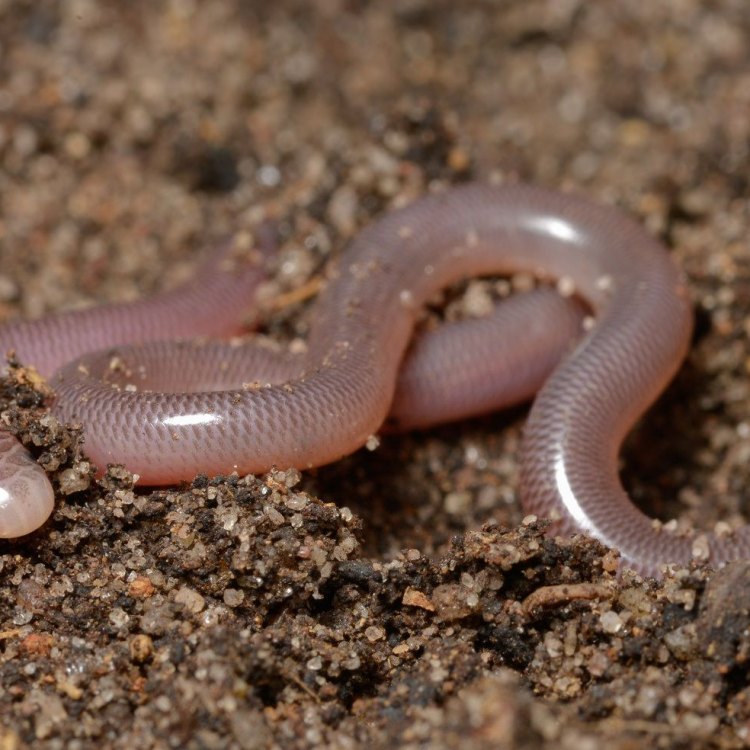
The Mysterious Western Blind Snake: A Hidden Gem of the Desert
Disclaimer: The content provided is for informational purposes only. We cannot guarantee the accuracy of the information on this page 100%. All information provided here may change without prior notice.

